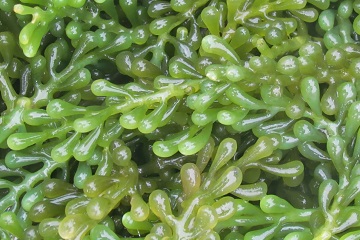IPB Researchers Utilize Local Seaweed as a Raw Material of Nile Tilapia Feed

The high amount of imported raw materials for fish feed in Indonesia causes high price of feed. Whereas there are local alternative materials such macroalgae that can be used as raw material of feed. One of the potential macroalgae as raw material for fish feed is Caulerpa lentillifera seaweed. Researchers from the Department of Aquaculture, Faculty of Fisheries and Marine Science, Bogor Agricultural University (IPB), Dedi Jusadi, explained that the carrageenan content in seaweed becomes a limiting factor in its use as feed ingredient.
"Seaweed in general has a physical property that can form a gel or become rigid, thus, species of seaweed that does not contain carrageenan is required, one of them is Caulerpa lentillifera. In addition, this species contains higher protein compared with red algae and brown algae," he said.
He and his colleagues, Nadisa Theresia Putri, Mia Setiawati and Mas Tri Djoko Sunarno from the Center for Research and Development of Freshwater Aquaculture, Sempur, Bogor, examined the potential of this seaweed as a raw material of nile tilapia feed. According to the results of the digestibility test, the researchers found that C. lentillifera seaweed showed a good value as raw material of nile tilapia feed. Material digestibility was 68,81% and protein digestibility equaled 86,31%. These meant that the seaweed can be digested well by fish.
"We also examine the growth performance of fish including final body weight, absolute growth, ratio of protein eficiency, protein retention, specific growth rates and feed eficiency. From the results of our research, C. lentillifera flour can be used up to 20 percent in nile tilapia feed," he added. (IR/ZSP/Zul)



